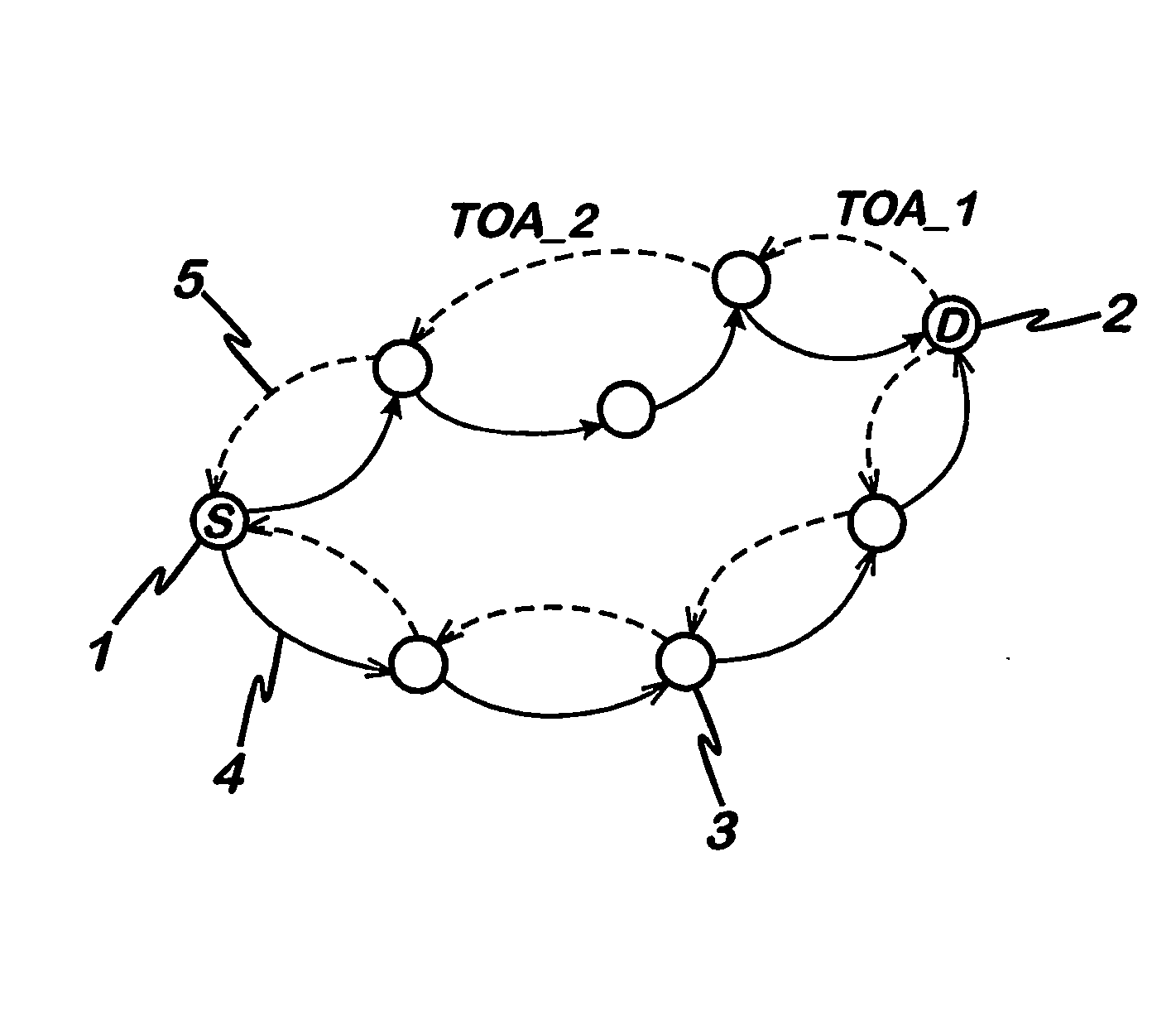Signal propagation delay routing
a delay routing and signal propagation technology, applied in the field of adhoc network provisioning of routing mechanisms, can solve problems such as the inclined accuracy and complexity of such methods, and achieve the effect of improving current routing algorithms
- Summary
- Abstract
- Description
- Claims
- Application Information
AI Technical Summary
Benefits of technology
Problems solved by technology
Method used
Image
Examples
Embodiment Construction
[0036]FIG. 1 shows an example of a mobile ad hoc network according to the present invention. The mobile ad hoc network will hereinafter be referred to as MANET, which is a popular abbreviation used in this field to indicate these types of networks. It can be seen that the MANET network is comprised of a plurality of network nodes 3, each node having at least one radio transceiver for transmitting and / or receiving from a neighbour node. FIG. 1 represents a snapshot of a MANET network at a particular instance in time, because by definition the ad hoc nature of such network means that the topology shown in FIG. 1 is expected to change dynamically over time. That is, the nodes 3 in a MANET network are free to move.
[0037] Data is transmitted across the network using a packet switched system where data packets are routed through a communications network on a “hop by hop” basis to reach their final destination. The Internet protocol (IP) is one embodiment of a protocol, which can be used ...
PUM
 Login to View More
Login to View More Abstract
Description
Claims
Application Information
 Login to View More
Login to View More - R&D
- Intellectual Property
- Life Sciences
- Materials
- Tech Scout
- Unparalleled Data Quality
- Higher Quality Content
- 60% Fewer Hallucinations
Browse by: Latest US Patents, China's latest patents, Technical Efficacy Thesaurus, Application Domain, Technology Topic, Popular Technical Reports.
© 2025 PatSnap. All rights reserved.Legal|Privacy policy|Modern Slavery Act Transparency Statement|Sitemap|About US| Contact US: help@patsnap.com



